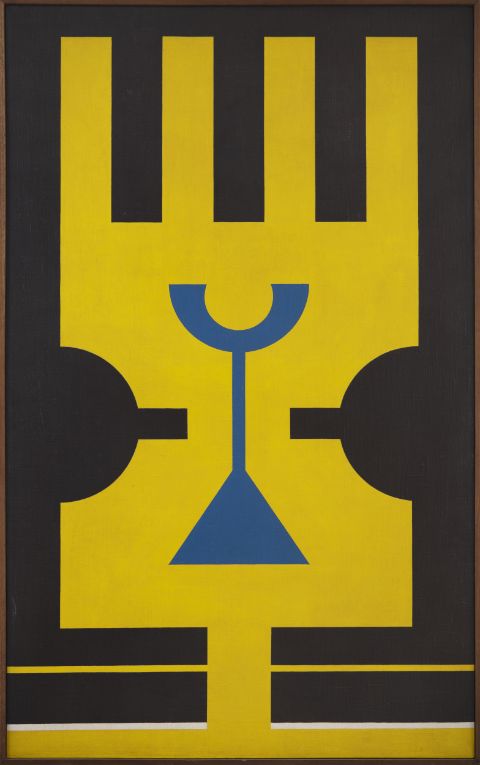Rubem Valentim

Photo: Bruno Leão
One of the first Afro-Brazilian artists to achieve an international profile, the self-taught painter and sculptor Rubem Valentim brought global attention to the sacred symbology of Candomblé and other Afro-Brazilian spiritist practices brought to Abya Yala by enslaved Yoruba peoples from West and Central Africa. In the Emblema series, Valentim appropriates the mid-century turn to abstraction and concretism as his work pools and transmutes the popular aesthetic through various elements of Afro-Atlantic symbolism and diagrams that historically reference the orishas (Yoruba spirits). Valentim’s visual language thus opposes the avant-gardist claim to newness by sourcing their methods through Brazilian points of reference: the land and people whose culture dominates the Afro-Brazilian coasts of Bahia and those who are often slighted in the larger national discourse. Valentim’s work acknowledges Brazil’s cultural complexities as he approaches the ancient practice of Candomblé through a mathematical language that questions frameworks of exoticism and places it in conversation with spirit worlds.
Work in the exhibition: Emblema V, 1973, painting, acrylic on canvas, 120 × 73 cm. Courtesy of Estate Rubem Valentim and Mendes Wood DM, São Paulo, Brussels and New York